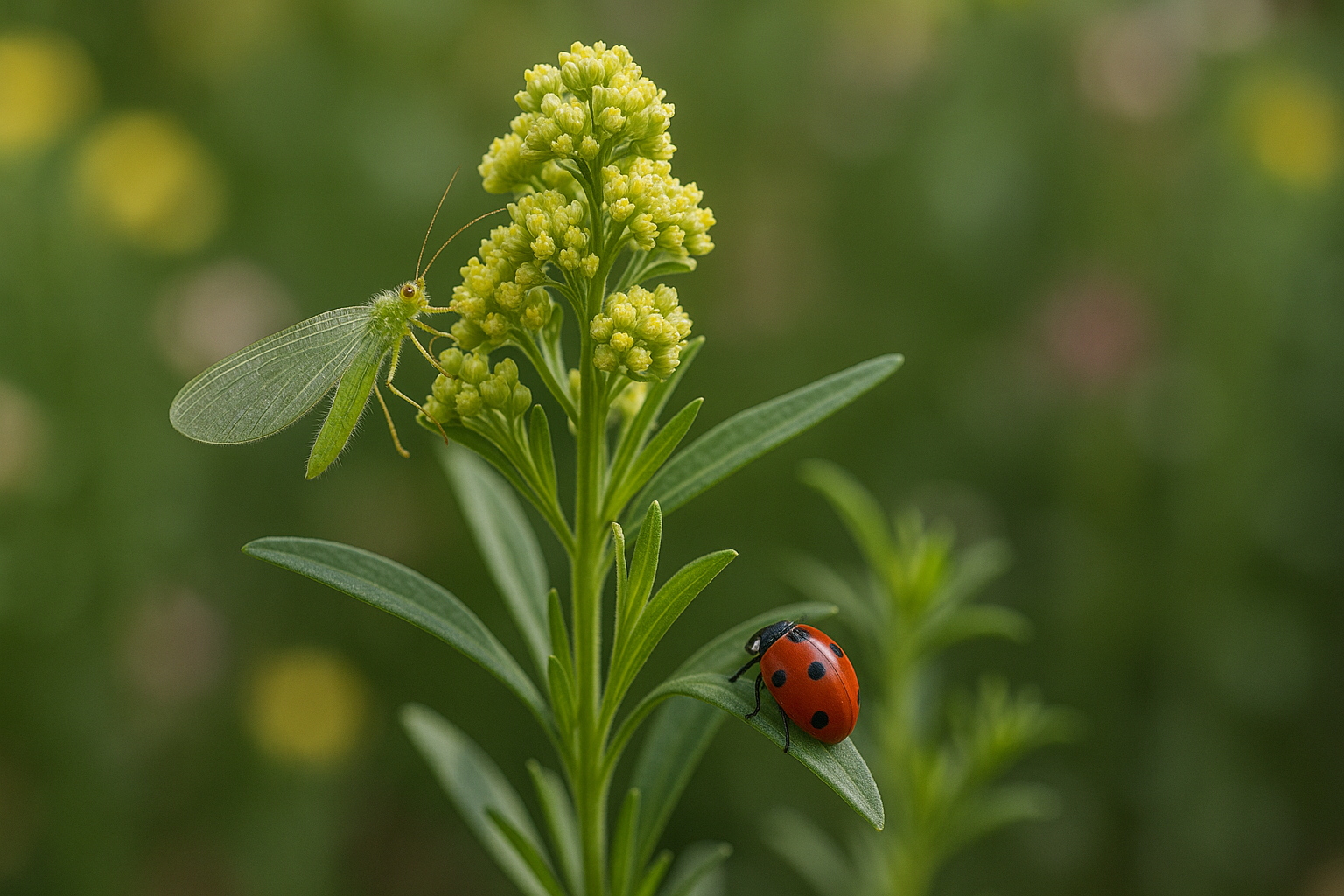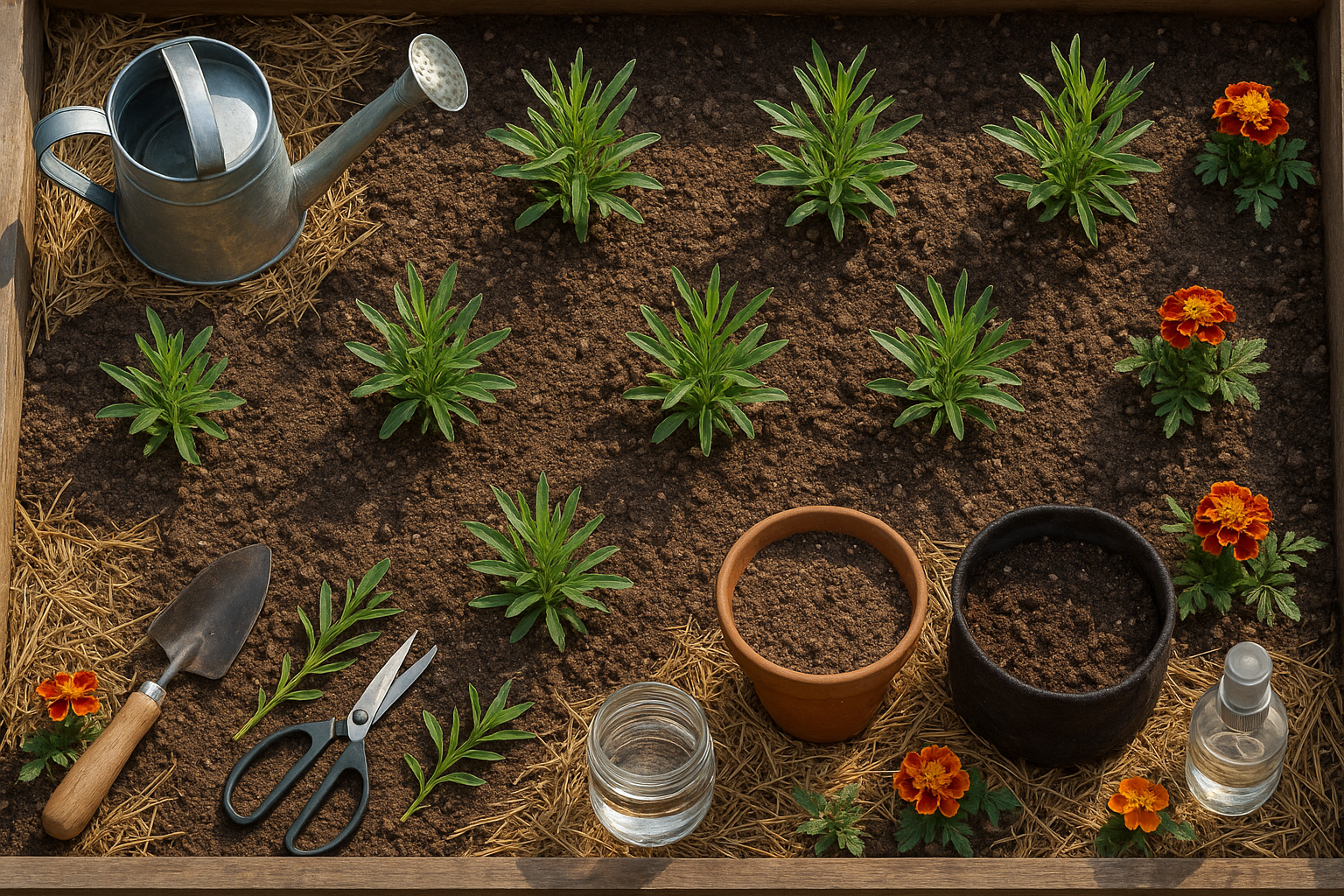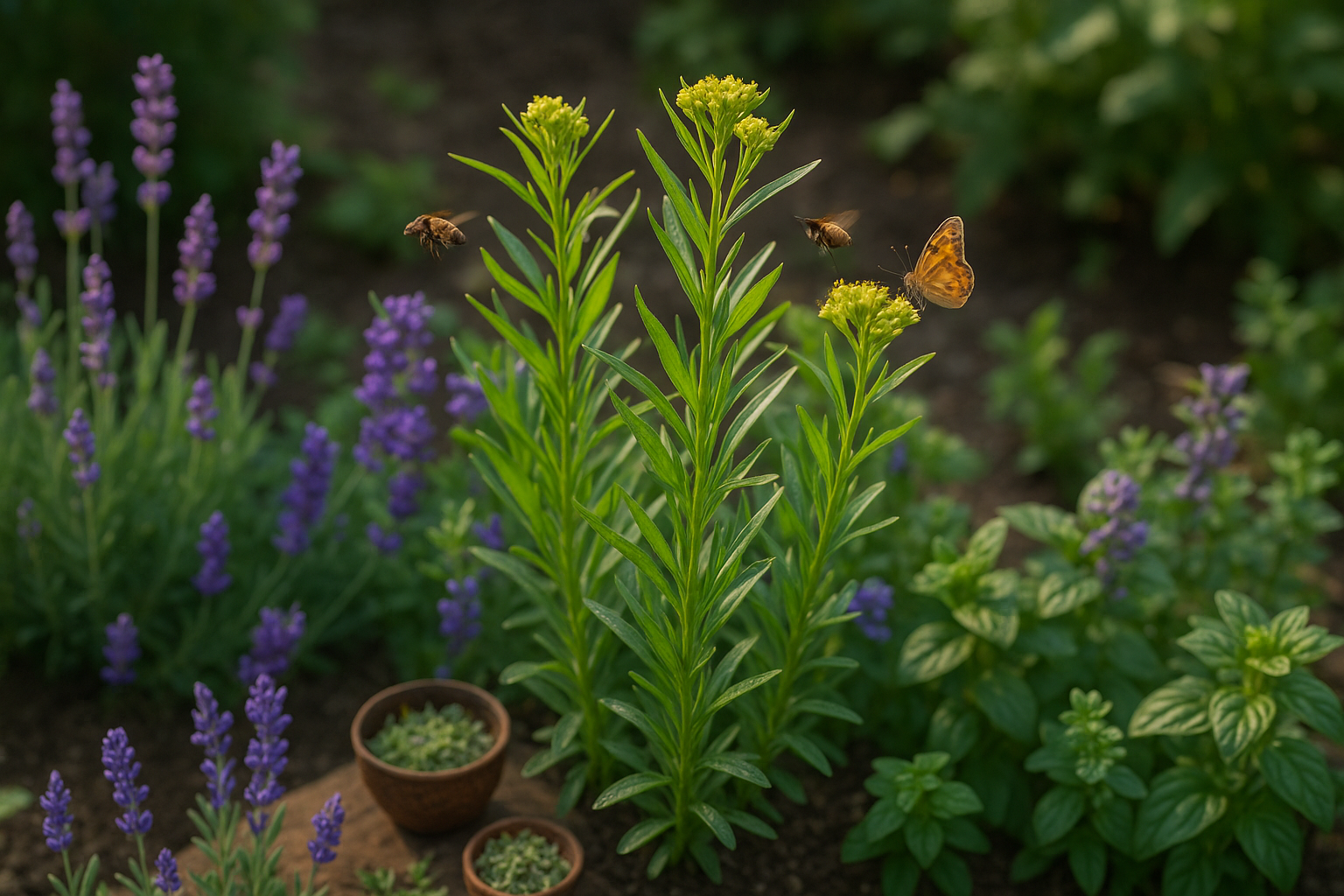Introduction to Tarragon for Pollinators and Beneficial Insects
Tarragon for pollinators is gaining attention among gardeners who want to create thriving, eco-friendly spaces. Tarragon (Artemisia dracunculus) is a flavorful perennial herb prized not only for its culinary uses and aromatic, narrow leaves but also for its hidden superpower: attracting a variety of beneficial insects. In recent years, using herbs like tarragon to support pollinators and helpful insects has become a popular trend, as more people aim to boost biodiversity and create healthier gardens without chemical sprays.
Whether you tend a large raised bed or just a few pots on a balcony, adding tarragon can enhance your gardening efforts. This post will explore how tarragon draws in helpful pollinators such as bees and butterflies, supports pest-controlling insects, and fits easily into mixed borders or herb gardens. You’ll also discover practical growing tips, its low-maintenance nature, and creative ways to combine it with other pollinator-friendly plants.
By the end, you’ll see how this simple herb can play a big part in supporting local wildlife—and make your garden more resilient, beautiful, and bountiful.
Why Choose Tarragon for Pollinator Gardens?

Tarragon stands out as a valuable addition to pollinator gardens thanks to its subtly attractive flowers, aromatic foliage, and nectar-rich properties. Unlike showier herbs like lavender or oregano, tarragon produces small, greenish-yellow blossoms that may not immediately catch your eye, but they’re a magnet for beneficial insects.
These flowers cluster in delicate sprays that bloom from late spring into early summer, offering a steady supply of pollen and nectar when other plants might not be flowering. The plant’s light, licorice-like scent isn’t just pleasant for gardeners—it also signals to pollinators such as bees, hoverflies, and certain butterflies that nourishment is available.
Compared to some herbs that attract only a handful of insect types, tarragon draws a wide range of pollinators and predatory insects like lacewings and ladybugs. These beneficial bugs play a crucial role in garden health by naturally controlling pests such as aphids, mites, and whiteflies. For example, having tarragon near your vegetables can increase visits from lacewings, whose larvae are voracious pest-eaters.
While basil, mint, and thyme also attract pollinators, tarragon’s ability to bring in both pollinators and natural pest controllers makes it an efficient multitasker for anyone hoping to build a resilient, thriving ecosystem.
To maximize its appeal, plant tarragon in small clusters or near the edges of garden beds where beneficial insects are most likely to find and utilize it. Whether you have a sprawling backyard or a compact urban plot, adding tarragon is a simple way to boost pollinator diversity while supporting a healthier, more self-sustaining garden environment.
Best Growing Conditions for Tarragon
Tarragon thrives when given the right environment, so choosing the best planting location is essential for lush, flavorful growth. Opt for a spot that receives at least six hours of direct sunlight each day—south or west-facing gardens and sunny raised beds are excellent choices.
Tarragon prefers well-drained, loamy soil with a neutral to slightly alkaline pH around 6.5 to 7.5. Avoid heavy clay or waterlogged areas, as this herb is prone to root rot. If necessary, amend your garden bed with compost, sand, or perlite to improve drainage.
In colder climates, planting tarragon in containers allows you to bring it indoors before frost. In warmer regions, planting directly in the ground is ideal since tarragon can handle mild winters with good mulch protection.
When planting, space the stems at least 18 to 24 inches apart to allow airflow, which helps prevent fungal issues.
Companion Planting
Tarragon pairs well with many plants. Nestle it near marigolds, zinnias, and coreopsis to boost pollinator traffic, or alongside tomatoes and eggplant, as it can help deter pests while attracting beneficial insects.
Water your tarragon regularly, keeping the soil lightly moist but never soggy. Avoid frequent splashing of leaves to minimize disease.
With mindful placement and companion planting, tarragon can flourish as a flavorful, aromatic addition to both your kitchen and a pollinator-friendly garden.
Planting and Caring for Tarragon

Growing tarragon at home is easier than you might think, and it’s a fantastic herb to have on hand for cooking. If you want to plant tarragon from seeds, sow them indoors about 6–8 weeks before the last frost date. Gently press the seeds into moist seed-starting mix without covering them too deeply, as tarragon seeds need light to germinate. Keep the soil consistently damp but not soggy.
French tarragon, however, rarely produces viable seeds, so it’s typically started from cuttings. To do this, take a healthy 4–6 inch cutting from a mature plant in spring or early summer, strip the lower leaves, and root it in a pot of damp potting mix.
Once seedlings or rooted cuttings have several sets of leaves and all risk of frost has passed, transplant them outdoors in well-draining soil in a spot that gets at least 6 hours of sunlight daily. Tarragon prefers to be on the drier side, so water only when the top inch of soil feels dry. A deep watering every 5–7 days is usually sufficient, but adjust for hot or rainy spells.
Prune regularly by snipping branch tips to encourage bushier growth and prevent flowering, which can reduce flavor.
Pest and Disease Control
To protect pollinators, avoid harsh chemicals. Instead, spray a gentle soap solution (mix one teaspoon of mild liquid soap in a quart of water) if aphids appear, and handpick any caterpillars you see. Space plants well to ensure good air circulation, which helps prevent fungal issues like powdery mildew.
Mulching with straw or shredded leaves can help retain moisture and suppress weeds. Healthy, organic tarragon not only tastes better but also offers a safe, pollinator-friendly addition to your garden.
Supporting Pollinators with Tarragon Throughout the Season
Tarragon may not be the first herb that comes to mind for pollinators, but it quietly plays a valuable role in supporting beneficial insects from late spring through early fall. As tarragon begins to grow, its subtle clusters of greenish flower buds form in early summer, attracting a variety of small pollinators such as bees, hoverflies, and even parasitic wasps—especially when other herbs may not be blooming as profusely.
If you allow your tarragon to flower, delay any major harvesting until the blooms fade, and avoid cutting all stems at once. This staggered harvest encourages longer blooming and ensures a steady food source for pollinators.
Companion Planting for Maximum Benefit
For extra benefit, plant tarragon alongside other pollinator-friendly herbs like chives, thyme, or lavender in a mixed border or raised bed. This creates a diverse and attractive habitat that keeps pollinators returning throughout the year. Mixing tarragon with a variety of early, mid, and late-season bloomers means there will always be something in flower, catering to the needs of different insects at every stage of the growing season.
Caring for Tarragon to Support Pollinators
- You can let some tarragon plants go untouched for a wilder look, providing shelter for beneficial insects over winter.
- Regularly check for and remove faded flowers to promote new growth and more blooms, extending its usefulness.
- Tarragon’s low-maintenance nature allows you to tuck it into edges, between taller shrubs, or near vegetables where pollinators are needed most.
This not only boosts your edible yields but also helps maintain a healthy, balanced garden ecosystem well beyond the tarragon’s own season. By thinking creatively about placement and timing, you can turn humble tarragon into a powerhouse for pollinator support all year long.
Other Top Herbs for Pollinators and How Tarragon Compares
When building a pollinator-friendly herb garden, top picks like thyme, mint, chives, and basil often steal the spotlight thanks to their fragrant blooms and steady stream of visiting bees, butterflies, and hoverflies. Thyme’s tiny purple blossoms are a magnet for honeybees, while the flower spikes on mint draw native bee species and beneficial wasps. Chives burst into cheerful, globe-shaped blooms early in the season, providing essential nectar when few other plants are flowering. Basil, especially when allowed to bolt, becomes a busy hub for bees and pollinator insects.
Tarragon, in contrast, is less flashy—its subtle yellow-green flowers attract far fewer pollinators than these showier herbs. Still, tarragon adds valuable variety to your garden’s palette and supports biodiversity, especially when mixed with bountiful-flowering herbs.
To design a vibrant herb garden that’s both insect-friendly and practical for your own use, aim for a blend of flower colors and shapes to invite a range of pollinators. Cluster similar plants together to create larger, noticeable targets for flying insects. Incorporate diverse planting heights and tuck in a mix of early-, mid-, and late-season bloomers to keep food sources available all summer.
While tarragon may play a modest role in attracting pollinators, its aromatic leaves and culinary value make it well worth growing alongside its more bee-friendly neighbors.
Conclusion
Tarragon is more than just a flavorful addition to your kitchen; it’s a magnet for beneficial pollinators like bees and butterflies, helping your entire garden thrive. By planting tarragon, you provide vital nectar and habitat, which means better pollination for your fruits and veggies. Plus, tarragon naturally deters certain pests, reducing the need for chemicals and promoting a healthier, more balanced ecosystem right in your backyard.
Try mixing tarragon with other pollinator favorites like basil, lavender, or chives for a dynamic, beautiful herb patch. Not only will you enjoy a fresh, aromatic harvest, but you’ll also support vibrant populations of dazzling insects.
Ready to make a difference? Grab a few tarragon plants, dig in, and watch your garden—and its pollinators—flourish together!
